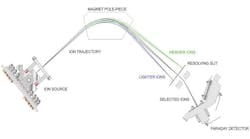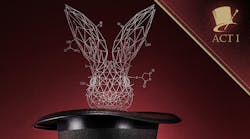It’s no surprise that Swiss-based Lonza has become a major player in the market for antibody drug conjugates (ADCs). As one of the biggest contract manufacturers in pharma, Lonza offers a wide range of capabilities for all the hot therapeutic areas. And now, Lonza has set itself apart in this fast-growing niche market of oncology by achieving the holy trifecta of ADC manufacturing.
Since their inception, ADCs, which combine a selective monoclonal antibody (mAb) with a potent cytotoxic agent to target diseased cells, have shown great promise in oncology. However, pharma companies have been hamstrung by the challenges of achieving all phases of ADC manufacturing — mAb and cytotoxic production, and then bioconjugation — at one site, ultimately leaving the supply chain fragmented. Although some companies have managed to get two of the three steps into one process, Lonza will soon become the first to manufacture all three ADC elements under one quality system at a single facility in Visp, Switzerland.
The evolution of ADCs
“The technology has been slower for about 10 years,” says Maurits Janssen, head of commercial development, API development and manufacturing at Lonza. “But now you can say that the tech has matured and is more ready for commercial use.”
Lonza's Visp manufacturing site, which was launched in 1902
So far, just seven ADCs have won FDA approval. But there are over 200 in the preclinical stages of development — suggesting that there is ample room for future growth in ADCs. Analysis has also shown that the market for ADCs is expected to increase about 30 percent year-over-year from now until 2024.
Lonza’s early entry into the ADC space (the company was involved in the development of the majority of the seven that were approved) is part of what helped make it a leader in ADC manufacturing. The company has also drawn on its vast experience in other areas of pharma — including antibodies, chemical toxins, high-potency APIs and more — to push the technology of ADC manufacturing to the next level.
Lonza’s current expansion in Visp, which is slated for completion in the second half of this year, and the effort to bring the fractured ADC supply chain onto a single site was also driven by rising customer demand.
“It all started on a small scale unit and grew over time,” Janssen explains. “We literally grew together with an ADC customer into this technology. And then our critical mass was increasing, so we had to invest and grow the facility.”
The next step
Although Lonza has achieved what Janssen says is now the “gold standard” of ADC manufacturing, the company is still looking at ways to improve its capabilities.
“We are now at the point where the technology is robust, and we need to look at what other advantages we can bring to patients,” he says.
In particular, Janssen says the company will be looking at other ways to simplify the supply chain for ADCs, and how to make improvements in packaging, labeling and shipping to clinics.
In the same way Lonza used lessons from other areas of pharma manufacturing to improve ADC production, Janssen says the company is also focused on making advances in another fast-growing market: cell and gene therapies.
“I think the manufacturing processes for cell and gene therapies is still standing in children’s shoes,” Janssen says.
Cell and gene therapy manufacturing is far more complex than ADC production, and the industry as a whole is figuring out best practices for bringing these therapies to patients. Toward that end, the company is focused on new technologies to advance cell and gene therapy manufacturing, says Alberto Santagostino, head of cell and gene technologies at Lonza. He points to Lonza leveraging its expertise in cell and gene therapy process development to help companies transition from lab-scale manufacturing to commercial production. In particular, Lonza is optimizing the vein-to-vein delivery system that is essential for scaling autologous cell therapies and using an automated GMP-in-a-box system to eliminate the manual processes associated with individual batches for personalized therapies. The company also has capabilities in disruptive technologies such as a non-viral transfection through its Nucleofector technology, which, for some ex vivo therapies, could ultimately replace viral vectors — one of the most challenging steps of gene therapy manufacturing.
“Our goal is to drive advances in manufacturing to enable our customers to bring curative therapies to large patient populations in a way that is commercially viable…regardless of the cell and virus type, manufacturing method or scale,” Santagostino says.






